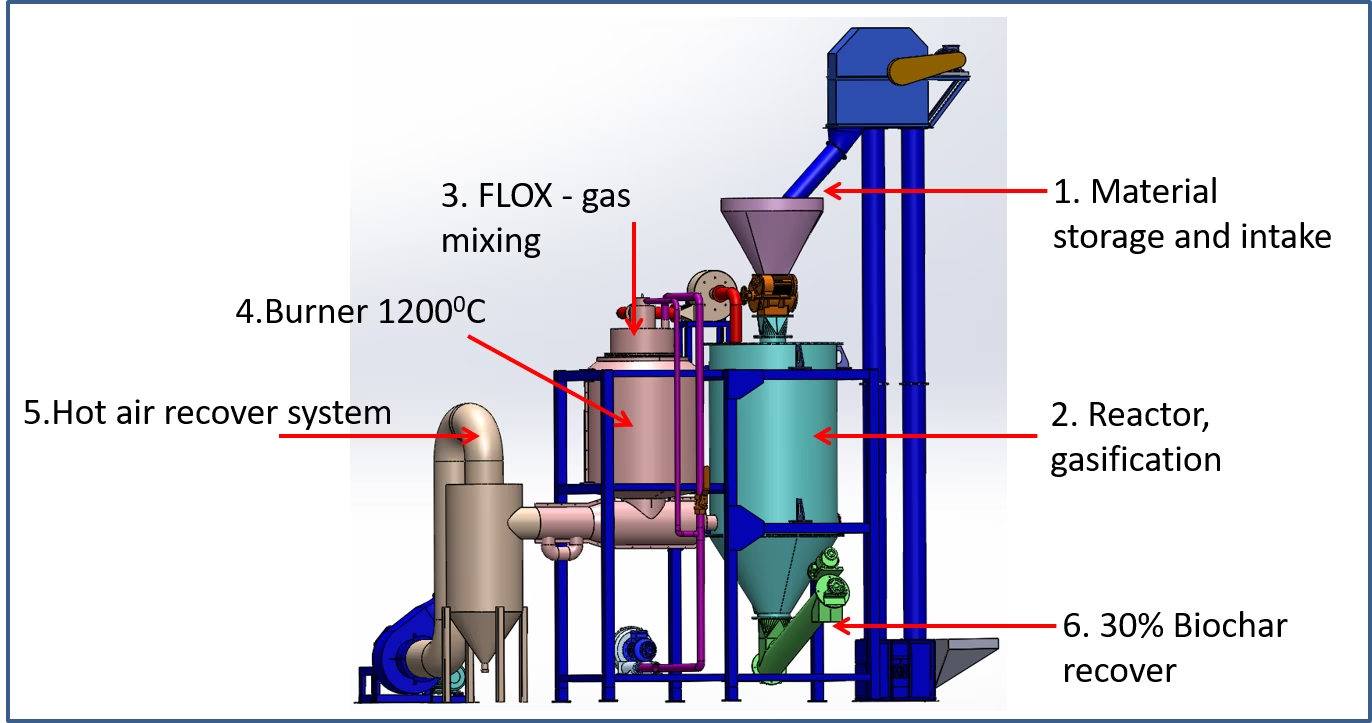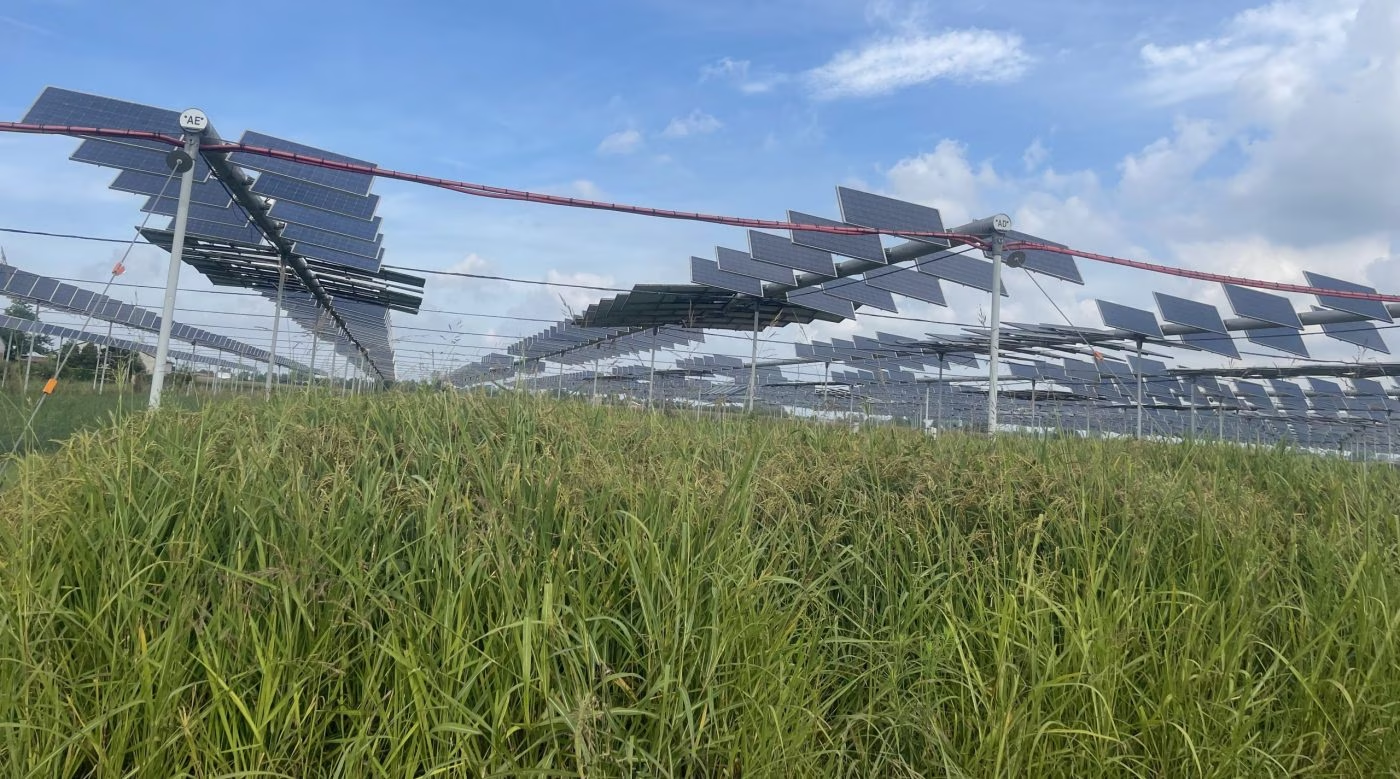
WHAT IS BIOCHAR?
Biochar is the carbon-rich organic matter that remains after heating biomass under minimization of oxygen during the process call “pyrolysis”. Biochar exists sustainably in the soil environment and increase the amount of carbon stored in the soil, reducing carbon emissions into the atmosphere, positively impacting the productivity of the soil (Scholz et al., 2014).
Biochar falls into the spectrum of materials called “black carbon”, which includes substances with a range of properties, including slightly charred biomass, charcoal, and soot (Masiello, 2004).
BIOCHAR PROPERTIES
Biochar properties greatly depend on the feedstock nature and production parameters such as pyrolysis temperature, catalyst, pressure and reaction time (Downie et al., 2009).
In terms of physical properties, biochar is black, highly porous, lightweight, fine-grained and has a large surface area. It increases microbial activity, water and nutrient retention in soils. It often enables a reduction in fertilizer and chemical use, improves soil health and results in increased crop yields.
Due to its adsorption ability, some biochar have the potential to immobilize heavy metals, pesticides, herbicides, and hormones; prevent nitrate leaching and fecal bacteria into waterways; and reduce N2O and CH4 emissions from soils.

HOW BIOCHAR PRODUCE?
There are many different ways to make biochar, but all of them involve heating biomass with little or no oxygen to drive off volatile gasses, leaving carbon behind. This simple process is called thermal decomposition usually from pyrolysis or gasification. These methods can produce clean energy in the form of gas or oil along with the biochar. This energy may be recoverable for another use, or it may simply be burned and released as heat.
BIOCHAR PRODUCTION TECHNOLOGIES
Biochar production systems are generally classified as either pyrolysis or gasification systems.
Pyrolysis Systems
Pyrolysis systems use kilns and retorts and other specialized equipment to contain the baking biomass while excluding oxygen. The reaction vessel is vented, to allow pyrolysis gases to escape. Pyrolysis gases are often called “syngas”. The process becomes self-sustaining as the syngas produced is combusted, and heat is released. There are two types of pyrolysis systems in use today: fast pyrolysis and slow pyrolysis. Fast pyrolysis tends to produce more oils and liquids while slow pyrolysis produces more syngas. DIFFERENT TYPES AND SIZES OF PYROLYSIS REACTORS
Gasification Systems
Gasification systems produce smaller quantities of biochar in a directly-heated reaction vessel with introduced air. The more oxygen a production unit can exclude, the more biochar it can produce. Biochar production is optimized in the absence of oxygen.
BIOCHAR SCALE AND VARIETY OF UNITS
Gasification and pyrolysis production system can be developed as mobile or stationary units. At the local or regional level, pyrolysis and gasification units can be operated by cooperatives or larger industries, and can process up to 4,000 kg of biomass per hour. Small scale gasification and pyrolysis systems that can be used on farm or by small industries are commercially available with biomass inputs of 50 kg/hour to 1,000 kg/hour.
OPPORTUNITIES FOR ADVANCED BIOCHAR PRODUCTION
Continuous feed pyrolysis to improve energy efficiency and reduce pollution emissions associated with batch kilns. Exothermic operation without air infiltration to improve energy efficiency and biochar yields. Recovery of co-products to reduce pollution emissions and improve process economics. Control of operating conditions to improve biochar properties and allow changes in co-product yields. Feedstock flexibility allowing both woody and herbaceous biomass (like crop residues or grasses) to be converted to biochar.

Under the financial support of the Swiss State Secretariat for Economic Affairs (SECO), the United Nations Industrial Development Organization (UNIDO) transferred from Switzerland to Vietnam a simple and low-cost pyrolysis technology as a way for waste minimization, primarily for the coffee and rice sectors since 2017. The technology allows to minimize agricultural waste through production of energy and biochar. At the same time, it avoids air pollution and unhealthy emissions from conventional ways to handle coffee waste, and the biochar produced can serve as a carbon sink and soil amendment to maintain soil health. A local manufacturer, Viet Hien Mechanical Company Limited, was supported for the adoption and further commercialization of the technology. Read more here.
BIOCHAR FEEDSTOCKS
Biochar can and should be made from biomass waste materials. Making biochar from biomass waste materials should create no competition for land with any other land use option – such as food production or leaving the land in its pristine state.
Biomass waste materials appropriate for biochar production include crop residues (both field residues and processing residues such as nut shells, fruit pits, bagasse, etc.), as well as yard, food and forestry wastes, and animal manures. Large amounts of agricultural, municipal, and forestry biomass are currently burned or left to decompose and release CO2 and CH4 back into the atmosphere. They also can pollute local ground and surface waters — a large issue for livestock wastes. Using these materials to make biochar not only removes them from a pollution cycle, but biochar can be obtained as a by-product of producing energy from this biomass. Feedstocks must not contain unacceptable levels of toxins such as heavy metals which can be found in sewage sludge and industrial or landfill waste.

Feedstock effects on nutrient properties of biochar
The composition of biochar (the amount of carbon, nitrogen, potassium, calcium, etc.) depends on the feedstock used and the duration and temperature of pyrolysis. As an example, biochar produced from feedstocks which have greater contents of potassium (such as animal litters) often have higher potassium contents than biochar made entirely from wood (which often have higher carbon contents). However, pyrolysis conditions greatly affect nutrient properties contents and so biochar should be tested on a batch by batch basis to determine specific properties.
Economic considerations
The choice of feedstock will be affected by the biomass resources in the immediate area and availability. Due to collection, and transport and storage costs, it often makes the most economic sense to use local feedstocks (if they are also an environmentally sustainable option). The most basic costs and benefits to consider with feedstocks choice are highlighted below:
Feedstock production and collection
If the feedstock is a residue, such as municipal biomass waste, logging or cropping residues, or a by-product such as bagasse, then the production is less an economic issue than if the feedstock is purposely grown for the production of biochar – such as switchgrass – which would include the costs and inputs needed for the growing and harvesting of the crop. Revenue in the form of tipping fees may be obtained from certain waste feedstocks.
Use tradeoff
This would include the potential nutrient value lost from using feedstock for biochar production rather than as a direct fertilizer on the field. How this trade off works will vary on the area and on the feedstock. For example, chicken litter my be valuable in some area as a direct fertilizer while in other areas it may be treated as a waste and represent a disposal cost.
Feedstock transport
When waste biomass is found far from the place where it will be used, transportation costs can be very high. In some situations it may make sense to densify the biomass by chipping or pelletizing before transport.
Feedstock storage and pre-processing
Many feedstocks will need to be dried before pyrolysis. Depending on the feedstock choice, the drying process could occur passively through careful storage or may need more intervention – such as using a drier (thus requiring energy and labor). Energy for drying could in some cases be obtained from the pyrolysis of previous batches of feedstock.
BIOCHAR APPLICATIONS
There are a number of publications on biochar and its potential benefits on specific applies. In Vietnam, four commercial pathways for biochar produced by small scale pyrolysis units consist of agriculture, wastewater treatment, activated carbon and the carbon market. For more information on these topics, you can search the UNIDO’s pyrolysis-biochar market analysis report.

The most attractive commercial opportunity for biochar in Vietnam lies in the agricultural sector, as biochar-based soil amendments, to improve soil quality and increase yields. Other potential uses of biochar include water/ wastewater treatment applications and as activated carbon.

